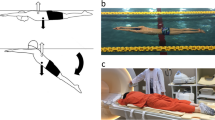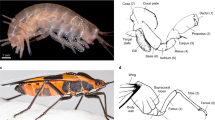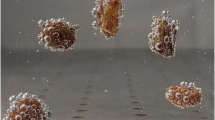Abstract
THERE is, I think, a fallacy which is frequently made in many of the problems dealing with the body orientation of Crustacea. I believe that practically all biologists dealing with this subject have accepted the idea that the position of the centre of gravity is a matter of great importance. Thus, to quote just one of the many statements which have been made along these lines: S. R. Williams1 says, “A sinking animal, like a lifeless body, always falls with the heavy end downwards.” Lifeless bodies do not sink with the heavy end downwards unless their specific gravity is considerably greater than the liquid in which they are sinking. Not only can this be demonstrated by experiment but also it is in agreement with standard text-book hydrodynamics.
This is a preview of subscription content, access via your institution
Access options
Subscribe to this journal
Receive 51 print issues and online access
$199.00 per year
only $3.90 per issue
Buy this article
- Purchase on SpringerLink
- Instant access to full article PDF
Prices may be subject to local taxes which are calculated during checkout
Similar content being viewed by others
References
Williams, S. R., “The Specific Gravity of some Fresh-water Animals in Relation to their Habits, Development and Composition”, American Naturalist, 34, 95–108 (1900).
Woltereck, R., “Uber Funktion, Herkunft und Entstehungaur-sachen der sogen”. “Schwebe-Forstätze pelagischer Cladoceren”, Zoologica, 26, Heft 67: 2 (Stuttgart, 1913).
Skogsberg, T., “Studies on Marine Ostracods”. Part 1. (Cypridinids, Halocyprids and Polycopids.) Pp. 109 (1920).
Wgler, E., “Branchiopoda, in Kükenthal and Krumbach's Handbuch der Zoologie”, Bd. 3. H.1 (1926–27), pp. 358–359, p. 416.
Author information
Authors and Affiliations
Rights and permissions
About this article
Cite this article
LOWNDES, A. Body Orientation in Crustacea. Nature 140, 241–242 (1937). https://doi.org/10.1038/1402741a0
Issue date:
DOI: https://doi.org/10.1038/1402741a0



